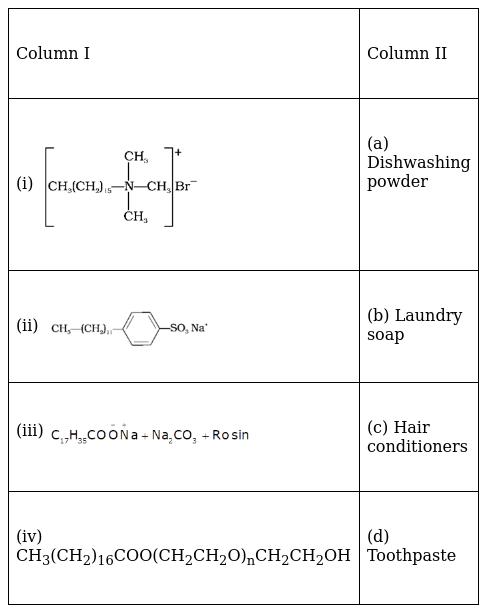Match the detergents given in Column I with their uses given in Column II.

(i) - (c) Hair conditioner.
Hair conditioner or shampoo includes cationic surfactants which we know that they have a cationic quaternary ammonium group present.
This is because, hair when they are wet possess a slight negative charge and the hair conditioner, due to the presence of cationic surfactants, have the cationic quaternary group and thus it sticks to the hair due to static attraction.

(ii) - (d) Toothpaste
The compound given to us  is an anionic detergent, as it possess the anionic suphonic group. The anionic detergent is responsible for producing foaming effects. Also it helps in the cleaning of our mouth. Due to all these features, it is used in toothpaste.
is an anionic detergent, as it possess the anionic suphonic group. The anionic detergent is responsible for producing foaming effects. Also it helps in the cleaning of our mouth. Due to all these features, it is used in toothpaste.
(iii) ![]() - (b) Laundry soaps
- (b) Laundry soaps
Laundry soaps contain a mixture of soap (sodium stearate), builders (sodium carbonate) and rosin. Rosin is used as because it makes the soap lather well.
(iv) CH3(CH2)16COO(CH2CH2O)nCH2CH2OH – (a) Dishwashing powder.
Non-ionic detergents, thus from the name we get to know that the surfactant present on them is uncharged. CH3(CH2)16COO(CH2CH2O)nCH2CH2OH thus we can see the surfactant is uncharged, so it is therefore a non-ionic detergent. Non-ionic detergents are used in dishwashing powder.